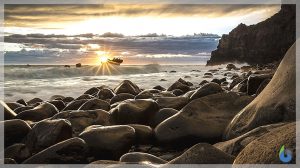Definition
noun, plural: hookworms
(1) A blood-sucking nematode, with hooked mouth parts used for fastening to the intestinal wall of the host
(2) Hookworm infestation
Supplement
Hookworms are parasitic nematodes. They are found attached on the intestinal walls of their hosts through their hooked mouth parts. They feed on the host’s blood. The site of entry is an exposed skin of the host, typically the feet. The larvae bore through the skin and make their way to the intestines through the bloodstream. The hookworm infestation may be asymptomatic and therefore individuals harboring these worms may act as carriers. Nevertheless, the most common health risk associated with hookworm infestation is anemia.
Examples of hookworms that commonly parasitize humans are Ancylostoma duodenale and Necator americanus. These worms resemble a hook because their head is slightly bent.1 A. duodenale and N. americanus can be differentiated by their mouthparts. A. duodenale has two pairs of teeth whereas N. americanus has a pair of cutting plates in the buccal capsule.1
Other hookworms that parasitize other animals are A. tubaeforme (a cat hookworm), A. caninum (a dog hookworm), etc.
See also:
- Ancylostoma
- Necator
- nematode
- anaemia
Related term(s):
Mentioned in:
- Carbon dichloride
- Mazamorra
Reference(s):
1 Pineda, N. & Yang, E. (n.d.). Hookworm: Ancylostoma duodenale and Necator americanus. Retrieved from ://web.stanford.edu/group/parasites/ParaSites2009/PinedaANDYang-Hookworm/PinedaANDYang-Hookworm.htm.







